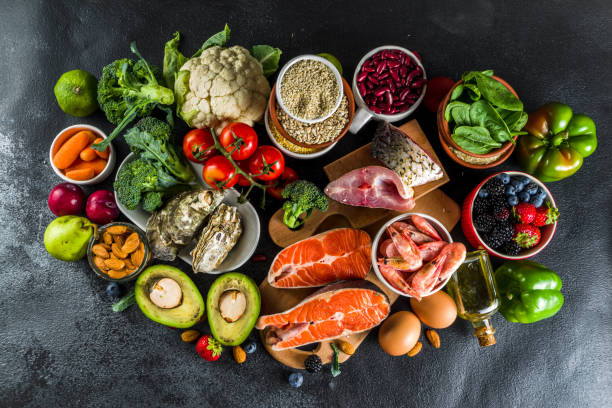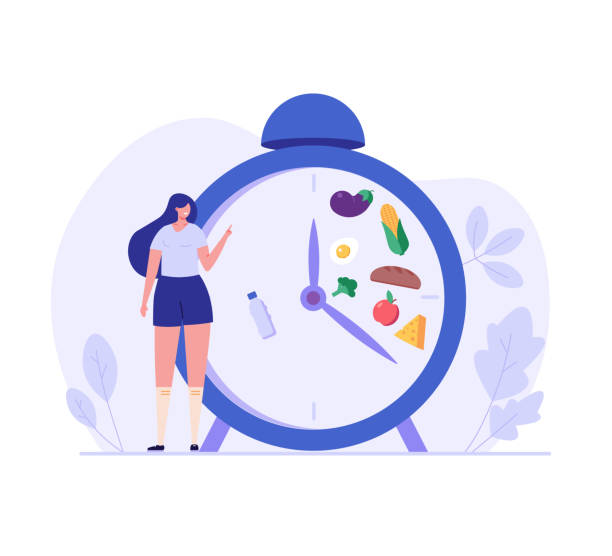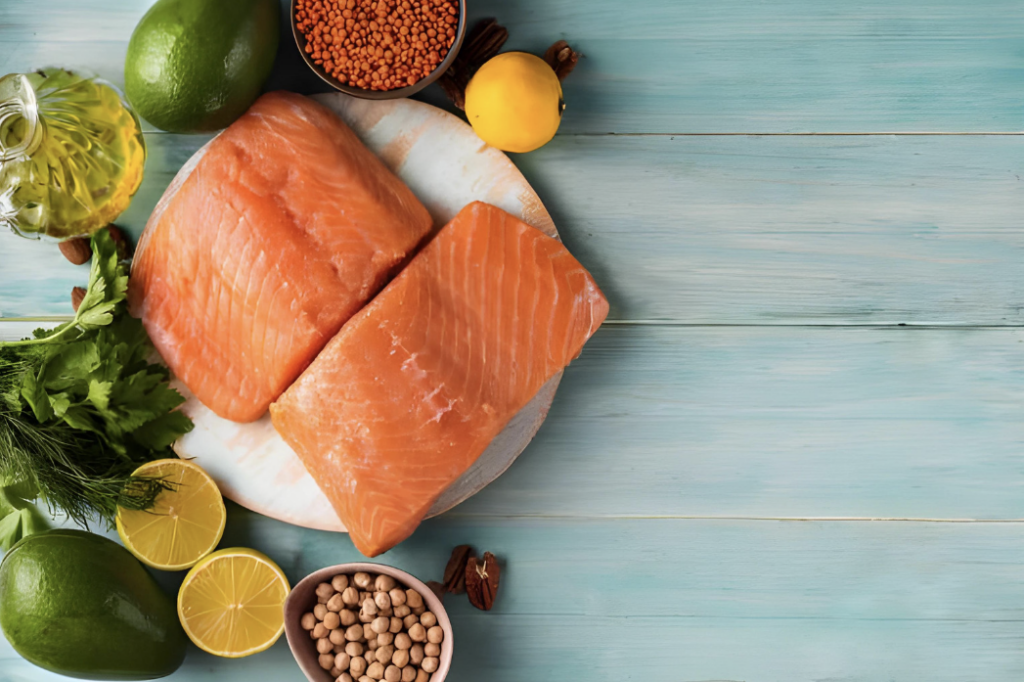Kinds of Diets
Fuel Your Body with Flavorful Pescatarian Keto Foods
Are you on a pescatarian diet and want to adopt a keto lifestyle? You are in luck! The pescatarian keto diet incorporates the principles of both diets, providing you with a diverse range of delicious and nutrient-dense foods to enjoy. In this article, we’ll look at what you can eat on a pescatarian keto diet and give you some ideas for delicious foods to keep you fed.
As a pescatarian, you’re already eating fish and shellfish, making it easier to incorporate high protein and good fats into your ketogenic diet. Salmon, tuna, shrimp, and other fatty fish contain high levels of omega-3 fatty acids and are low in carbs, making them ideal for the keto diet. Along with fish, you can have a variety of low-carb veggies, nuts & seeds, and healthy oils.
A pescatarian keto diet allows you to reap the benefits of ketosis while also fueling your body with the deliciousness of seafood and plant-based foods. Let’s get started and discover the fascinating and delicious options accessible to you on a pescatarian keto diet!
Understanding the Principles of the Keto Diet
The keto diet, also known as the ketogenic diet, is a low-carb, high-fat diet that has grown in popularity due to its weight loss and potential health benefits. The keto diet’s primary purpose is to put your body into ketosis, a metabolic state in which it burns fat for fuel rather than carbohydrates.
To achieve ketosis, substantially lower your carbohydrate intake while increasing your intake of healthy fats. This shift in macronutrient ratios causes your body to move from using glucose as its primary energy source to using ketones, which are created by the breakdown of lipids in the liver.
By adopting a pescatarian keto diet, you can reap the benefits of ketosis while still including fish and shellfish into your diet. This provides for a more broad selection of food options while still meeting your protein and omega-3 fatty acid requirements, which are critical for overall health and well-being.

What is a Pescatarian Diet?
Before we go into the intricacies of a pescatarian keto diet, let’s define what a pescatarian diet is. A pescatarian diet is a vegetarian diet that consists of fish and seafood. It bans meat and poultry but allows the intake of animal products such as eggs and dairy.
Pescatarians adopt this dietary strategy for a variety of reasons, including ethical concerns, health benefits, and personal preferences. Fish and seafood supplement a vegetarian diet with critical nutrients such as omega-3 fatty acids, vitamin D, and iodine, which may be deficient in plant-based diets.
The pescatarian diet is a versatile and sustainable way to eat, and when paired with keto diet principles, it can provide a well-rounded and nutrient-dense way to nourish your body.
Benefits of Combining the Pescatarian and Keto Diets
Combining the pescatarian and keto diets has numerous advantages that might improve your general health and well-being. Let’s look at some of the benefits of eating a pescatarian keto diet:
- Weight reduction: Studies have indicated that the ketogenic diet promotes weight reduction by decreasing hunger and improving metabolism. By including fish and seafood into your diet, you may enjoy a choice of low-calorie, nutrient-dense selections that will help you lose weight.
- Heart Health: A pescatarian diet high in fish and shellfish is related with a lower risk of heart disease. Fatty fish include omega-3 fatty acids, which can help reduce inflammation, lower triglyceride levels, and enhance overall cardiovascular health.
- Increased Nutrient Intake: The pescatarian keto diet offers for a diverse selection of dietary options, ensuring that you acquire a variety of critical nutrients. Fish and shellfish have high levels of protein, omega-3 fatty acids, vitamins, and minerals, and low-carb vegetables contain fiber, antioxidants, and phytochemicals.
- Sustainability: The pescatarian keto diet promotes sustainable eating by minimizing reliance on meat and poultry. This food option has a low environmental impact and benefits both animals and the world.
By combining these two diets, you can enjoy the benefits of ketosis while still nourishing your body with the goodness of seafood and plant-based foods.

Foods to Focus on in a Pescatarian Keto Diet
When following a pescatarian keto diet, it is critical to consume meals that are low in carbohydrates but high in healthy fats and protein. Here are some major food groups to incorporate into your pescatarian keto diet plan:
Fatty Fish and Seafood
Fatty fish such as salmon, mackerel, and sardines are ideal for a pescatarian keto diet. They are high in omega-3 fatty acids, which have been shown to lower inflammation, improve brain function, and boost heart health. Other seafood options, such as shrimp, scallops, and crab, are low in carbohydrates and strong in protein, making them excellent for the keto diet.
Low-Carb Vegetables
Vegetables are essential components of any healthy diet, including the pescatarian keto diet. Concentrate on non-starchy vegetables such as leafy greens, broccoli, cauliflower, zucchini, and asparagus. These vegetables are low in carbohydrates but abundant in fiber, vitamins, and minerals, making them an ideal addition to any meal.
Nuts and Seeds
Nuts and seeds include healthy fats and protein, making them ideal for a pescatarian keto diet. Almonds, walnuts, chia seeds, flaxseeds, and hemp seeds are all low in carbohydrates but high in vital nutrients. They can be consumed as a snack or mixed into salads and recipes to increase the nutritious content of your meals.
Healthy Oils
Healthy oils such as olive oil, coconut oil, and avocado oil are essential elements in a pescatarian keto diet. These oils are high in monounsaturated fats, which have been demonstrated to promote heart health and weight loss. Use them to cook, dress salads, or drizzle over roasted veggies.
By focusing on these food groups, you may prepare delicious and filling meals that are both pescatarian and keto.
Sample Meal Plan for a Pescatarian Keto Diet
To give you a sense of how a pescatarian keto meal plan looks, here’s a sample diet for one day:
Breakfast: Smoked salmon and avocado omelette cooked in olive oil. – A side of sautéed spinach and garlic.
Lunch: Grilled tuna steak with roasted Brussels sprouts. – Mixed green salad with cherry tomatoes, cucumber, and feta cheese, drizzled with olive oil and lemon juice.
Afternoon snack: A handful of almonds and walnuts.
Dinner: Baked fish with lemon and dill sauce. – Steamed broccoli and cauliflower with butter.
Evening snack: Greek yogurt with chia seeds and raspberries.
Remember to change portion quantities and ingredients based on your own needs and tastes. This sample meal plan balances protein, healthy fats, and low-carb vegetables to keep you in ketosis while eating great and satisfying meals.

Tips for Successful Meal Planning and Preparation
Meal planning and preparation are key to maintaining a pescatarian keto diet successfully. Here are some tips to help you stay on track:
- Plan Ahead: Set aside time each week to plan your meals and make a grocery list. Having a strategy in place can help you keep to your dietary objectives and avoid harmful food choices.
- Batch Cooking: Batch cooking is preparing greater quantities of food and portioning them out for the week. This saves time and ensures that you always have a healthy lunch alternative ready.
- Use Meal Prep Containers: Purchase a set of meal prep containers to portion your meals and snacks. These containers are ideal for storing and reheating food, making dinner preparation a breeze.
- Experiment with Recipes: Don’t be scared to attempt new recipes and mix up the flavors and ingredients. There are numerous pescatarian keto recipes available online that will inspire you to prepare delicious and satisfying meals.
- Stay Hydrated: Drinking plenty of water is necessary for good health and can help suppress cravings. Keep yourself hydrated during the day by taking a water bottle with you.
By following these tips, you can set yourself up for success and make the pescatarian keto diet a sustainable and enjoyable lifestyle choice.
Common Challenges and How to Overcome Them on a Pescatarian Keto Diet
While the pescatarian keto diet has many advantages, it can also pose some difficulties. Here are some common obstacles and how to solve them.
Limited Dining Out Options
Finding pescatarian keto-friendly options at restaurants might be difficult. Research menus ahead of time, find places that include seafood and vegetable-based dishes, and request keto-friendly changes to the meal. You can also eat fish or seafood cooked in healthy oils, served with non-starchy veggies.
Meeting Protein Requirements
As a pescatarian, it is critical that you achieve your protein requirements. Incorporate a variety of fish and seafood into your meals, and think about using plant-based protein sources like tofu, tempeh, and edamame. Additionally, nuts, seeds, and Greek yogurt can help increase your protein consumption.
Maintaining Variety and Interest
To avoid boredom and keep your meals interesting, try new recipes and experiment with different flavors and ingredients. Look for pescatarian keto cookbooks or visit trusted websites for dish ideas. To keep your meals interesting, don’t be hesitant to experiment with new ingredient combinations.
Getting Enough Omega-3 Fatty Acids
While fish and seafood are good sources of omega-3 fatty acids, you need still make sure you receive enough. Consider taking omega-3 supplements or including omega-3-rich foods such as flaxseeds, chia seeds, and walnuts in your meals.
By being proactive and finding answers to these issues, you may flourish on a pescatarian keto diet.

How to Incorporate Intermittent Fasting with a Pescatarian Keto Diet
Intermittent fasting is a popular dietary plan that involves alternating between fasting and eating. It is simple to incorporate into a pescatarian keto diet, resulting in additional health advantages and weight loss possibilities.
The 16:8 approach, which involves fasting for 16 hours and eating within an 8-hour window, is one way to practice intermittent fasting. During the fasting phase, you can satisfy your hunger with water, herbal tea, or black coffee.
To incorporate intermittent fasting into your pescatarian keto diet, change your meal times accordingly. For example, you could have your first meal at midday and your final meal at 8 p.m., resulting in an 8-hour eating window.
Intermittent fasting can boost the benefits of ketosis, improve insulin sensitivity, and stimulate fat loss. However, you must listen to your body and alter the fasting window to meet your own demands and lifestyle.
Conclusion
The pescatarian keto diet is a novel and exciting method to provide your body with nutrient-dense foods while reaping the advantages of ketosis. By combining the principles of the pescatarian and keto diets, you may develop a healthy and pleasurable eating plan that promotes your overall well-being.
With a concentration on fatty fish and shellfish, low-carb veggies, nuts and seeds, and healthy oils, you can prepare excellent pescatarian and keto foods. By planning ahead, experimenting with recipes, and overcoming typical obstacles, you can make the pescatarian keto diet a long-term lifestyle choice.
Remember to listen to your body and speak with a healthcare practitioner or qualified dietitian before making any major dietary changes. Accept the pescatarian keto diet as a method to fuel your body, achieve your health objectives, and enjoy the great flavors and variety it provides to your foods.
Trusted Health, Wellness, and Medical advice for your well-being


